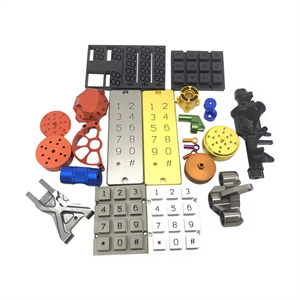CNC Milling is a process that utilizes Computer Numerical Control (CNC) technology to perform milling operations. CNC milling machine is an automatic processing equipment developed on the basis of general milling machines. Its processing technology and structure are similar to traditional milling machines, but it has a higher degree of automation and processing accuracy.
CNC milling machines use milling cutters (usually referred to as end mills or end mills) with rotating cylindrical cutting heads and multiple chip discharge slots, which can move along different axes to process workpieces of various shapes and sizes. This processing method is widely used in the processing of prismatic parts, such as narrow holes, grooves, outer profiles, etc.
The main advantages of CNC Milling include high precision, high efficiency, flexibility, and automation. It can meet the processing needs of various precision components, improve production efficiency and economic benefits, reduce manual operations, and improve the automation level and stability of the production line.
In the manufacturing industry, CNC Milling is widely used in various fields, such as medical equipment, aerospace, mold manufacturing, etc. It can achieve high-precision processing and customized production to meet the needs of different customers. With the continuous development of the manufacturing industry, CNC Milling will continue to play an important role in promoting the development of the manufacturing industry to a higher level.
CNC milling of copper brass parts is a high-precision and high-efficiency machining method. When CNC milling copper brass parts, it is necessary to fully consider factors such as material characteristics, part requirements, and processing equipment to ensure the achievement of high-quality processed products.
Advantage:
High precision: capable of processing complex shapes and high-precision dimensions, meeting the strict requirements of copper brass parts.
High efficiency: Through CNC programming, automated continuous processing can be achieved, greatly improving production efficiency.
Key points of the process:
Tool selection: Wear resistant and high-temperature resistant tools should be selected. For example, hard alloy cutting tools are commonly used for milling copper brass.
For example, when processing small precision copper brass parts, a smaller diameter hard alloy end mill may be selected.
Cutting parameters: Reasonable cutting speed, feed rate, and cutting depth are crucial for ensuring machining quality and tool life.
Generally speaking, the cutting speed should not be too high to avoid generating too much heat, which can lead to increased tool wear and part deformation.
Cooling and lubrication: Good cooling and lubrication can reduce cutting temperature, reduce tool wear, and improve surface quality.
Commonly used cooling lubricants include emulsions, cutting oil, etc.
Application scenario:
Instrumentation: Used to manufacture high-precision instrument components.
Electronics industry: processing of components such as connectors and sockets.
